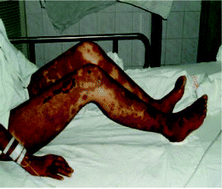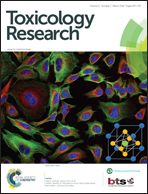Trichloroethylene-induced hypersensitivity dermatitis was associated with hepatic metabolic enzyme genes and immune-related genes
Abstract
Trichloroethylene (TCE) is one of the common organic solvents that has been widely used in cleaning or degreasing of metal and electronic products. However, hundreds of cases of hypersensitivity dermatitis have occurred after the workers were occupationally exposed to TCE in China over the past decade. The purpose of this study was to investigate mRNA expression of hepatic metabolic enzyme genes, immune-related genes, apoptosis genes and oncogenes in patients with hypersensitivity dermatitis induced by trichloroethylene. 12 typical patients with TCE-induced hypersensitivity dermatitis were investigated as the study cases, peripheral blood samples were taken from patients and control, and real-time fluorescence PCR assay was applied for detection of mRNA expression of hepatic metabolic enzyme genes, immune-related genes, apoptosis genes and oncogenes. It was found that the relative levels of mRNA expression of CYP1A2, CYP2E1, CYP3A4 and CYP2C9 increased by 723%, 318%, 385% and 216%, respectively, when compared with control (p < 0.01 or p < 0.05); Foxp3, GATA3 and CTLA4 mRNA expression increased by 104%, 106% and 253%, respectively, in TCE patients when compared with control (p < 0.01); T-bet expression decreased by 44% when compared with control (p < 0.01); these findings indicate that some immune-related genes and hepatic metabolic enzyme genes might play an important role in the process of trichloroethylene-induced hypersensitivity dermatitis.


 Please wait while we load your content...
Please wait while we load your content...